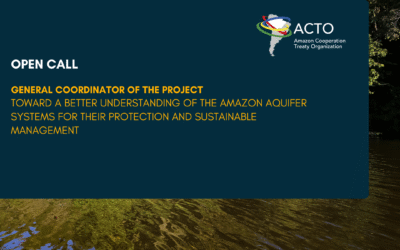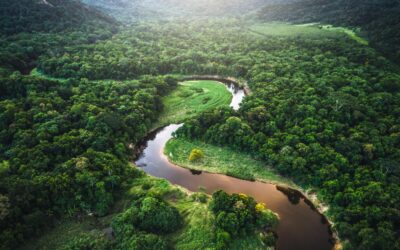This October, the Hydraulics and Hydrology Institute (IHH) of the Universidad Mayor de San Andrés installed monitoring equipment in the glaciers that supply the cities of La Paz and El Alto. The activity is an essential part of the intervention that seeks to guarantee the water security of the two urban centers that depend on water from the Andes for human consumption and agricultural and livestock activities.
The retreat of the Andean glaciers as a result of climate change, associated with the El Niño weather phenomenon and population growth, has led to a decrease in water supply in the region, with repercussions for the Amazon basin, since the headwaters of many of the Amazon rivers are located in the Andes.
According to official figures, the loss of glacier cover in Bolivia has been between 37% and 42% over the last 30 years. This decline is particularly critical for the cities of La Paz and El Alto, which are home to a population of 2.6 million people who depend on glacier water.
The monitoring system and the efficient use of water
The implementation of the monitoring system will directly benefit 1.8 million people in the two cities and will allow the Institute of Hydraulics and Hydrology (IHH) of the Universidad Mayor de San Andrés, which is carrying out the project in coordination with the Bolivian Ministry of Foreign Affairs and the Ministry of Environment and Water (MMAyA), to develop a management model for the efficient use of water, which will be presented in 2025 as a result of the intervention.
“Among the actions we have already proposed to improve water supply in the cities of La Paz and El Alto are structural measures such as reducing losses and leaks in the network, implementing Sustainable Urban Drainage Systems (SUDS) for urban water use and building rainwater tanks and alternative uses. We also intend to propose a program to promote the collection of rainwater in homes,” explains the project’s national coordinator, José Luis Montaño, a research professor at the IHH.
The monitoring stations
The first two stations, which will provide meteorological, hydrometric, glacier melt and present and future water supply and demand data, were installed on October 16 in the Tuni reservoir and the Condoriri basin.
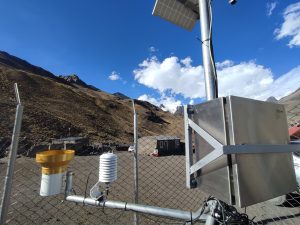

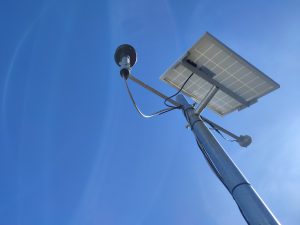
According to the national intervention’s work schedule, the glacier monitoring system will be completed by mid-December with the installation of the third weather station.
To re-establish the existing monitoring system, which is one of the objectives of the intervention project, around 20 automatic water level sensors, which are in poor condition, are being replaced. These sensors, located at the outlet of the glacier basins, will make it possible to produce a hydrological model of the glaciers and calculate the mass balance of each glacier.
When the monitoring system is completed, the hydrometeorological and hydrometric data will be debugged and processed in a continuously fed database, from which the water management model will be generated for all the basins involved, taking into account climate variability and change.
On October 31, the Bolivian Ministry of Foreign Affairs inaugurated the first phase of the monitoring system with the participation of cooperation agencies, organizations linked to the issue and representatives of the diplomatic corps accredited in Bolivia. The event was held at the foot of the Condoriri glacier to present the national intervention project, its scope and importance for the sustainable management of water from glacial sources.
“These mountains dressed in white are sentinels of the Amazon and, at the same time, of the Altiplano. They are the living representation of the interdependence between the Andes and the Amazon,” said Deputy Foreign Minister Freddy Mamani Machaca in his speech.
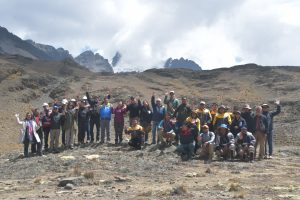
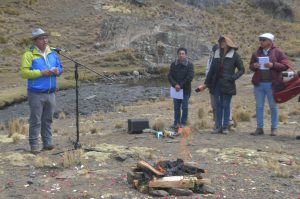
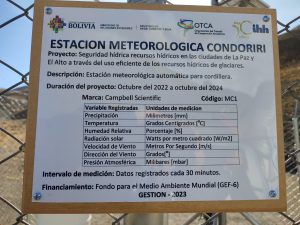
Strategic Actions Program
The intervention “Water security in the cities of La Paz and El Alto through the efficient use of glacial water resources” is implemented in the context of the Strategic Actions Program (SAP), within the framework of the Amazon Basin Project (ACTO/UNEP/GEF).
The SAP was adopted in 2017 by the ACTO member countries (Bolivia, Brazil, Colombia, Ecuador, Peru, Guyana, Suriname and Venezuela) as a guiding instrument for regional cooperation to strengthen Integrated Water Resources Management (IWRM), the adaptation of institutions to climate variability and change and also for knowledge management, in order to facilitate its application in the formulation of public policies and decision-making.
Among the program’s 19 strategic actions, which are key to promoting collective responses to the rapid degradation of water resources, land and biodiversity, is the action to develop and implement measures to adapt to the retreat of glaciers in the Andes of the Amazon basin.
This action is currently being carried out through the water monitoring and security project in the Bolivian Andes and also through the intervention that seeks alternative water supplies for communities in the Peruvian Amazon basin that depend on water from the snow-capped mountains of Carabaya and Apolobamba.










